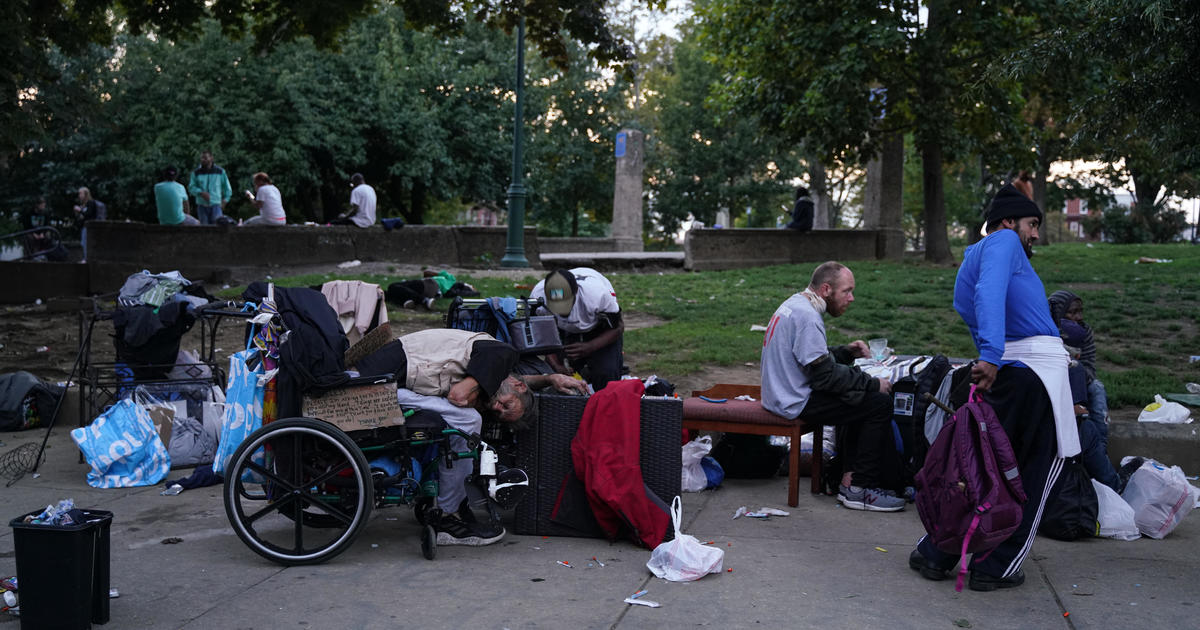
La Campaña vs las Adicciones del @GobiernoMX busca informar a los jóvenes de los daños que provoca a la salud el consumo de drogas químicas. La información y la participación de la familia y de la escuela son importantes factores de protección vs las adicciones. ¡Infórmate! pic.twitter.com/A8MkptVqHG
— Jesús Ramírez Cuevas (@JesusRCuevas) November 8, 2022
The Mexican government is using video of homeless people and open-air drug users in Philadelphia’s embattled Kensington neighborhood in a national ad campaign to try to scare young people away from drugs.
The spots never identify the city or neighborhood shown. But just how or why the Mexican government decided to use street scenes from the U.S. to scare Mexicans — who have their own drug problems — is not clear. Critics say the ads recycle scare tactics about drugs rather than offer help or treatment.
Jesús Ramírez, the spokesman for President Andrés Manuel López Obrador, proudly presented the ad series Tuesday. But Ramírez did not respond to repeated requests for comment as to where the government got the Philadelphia videos or why they used them.
The use of the videos, apart from sparking concern over Philadelphia’s image, or whether those filmed had given their consent, raised questions, in part because Mexico is the source of most of the fentanyl being sold in the United States.
In one spot presented Tuesday entitled “Crystal” (meth), a Spanish-speaking narrator says, in a voice-over above scenes of drug users shaking or contorting along trash-strewn Kensington Avenue, “Crystal (meth) finishes you off quickly, it takes away hunger and tiredness and causes hallucinations and psychosis. It damages the body and mind.”
The Philadelphia Mayor’s Office acknowledged the drug problem but said it is not limited to one city or neighborhood, and noted that all people are capable of “hope, healing, and resilience.”
“The opioid and overdose crisis in Philadelphia is part of a national and even international epidemic, and we agree it is important for everyone to understand, as this video notes, that all street drugs now present an elevated risk of overdose because of fentanyl’s extreme prevalence,” a spokesperson for Mayor Jim Kenney said.
“Having said that, it is always hard to see our city’s people and neighborhoods portrayed in a limited and negative light. No neighborhood, and no person, should be defined by this tragic and widespread crisis,” they said.
Philadelphia is debating solutions to the overdose crisis — Kenney supports proposals for supervised injection sites — while the number of overdose deaths continues to climb, reaching 1,276 deaths last year.
Another Mexican spot depicts scenes of drug users or homeless people slumped or standing unsteadily in Kensington, which can be identified by transit signs in the videos.
“Now the narcos are adding fentanyl to hook you from the first time you use. Fentanyl kills,” the narrator says in Spanish. “It is 50 times more potent than heroin. Two hundred people die every day from using it. Don’t risk it!”
However fentanyl use remains relatively low in Mexico — almost all is exported to the United States — while there are plenty of meth and crack users.
Only one of the government anti-drug ads — one focusing on glue-sniffing — used recognizably Mexican street footage. Other scenes show people wearing sweatshirts that say “California” and “Barcelona.”
“These are terrible ads; they’re truly terrible,” said Mexico security analyst Alejandro Hope. “They are badly thought out, badly produced, and they are the result of bad public policy. There is no public health message there.”
Instead of offering help, hotlines, advice or treatment options — which in the public sector are almost non-existent in Mexico — Hope said they repeated the most aggressive U.S. drug-scare tactics of the 1980s.
“I don’t think these ads are aimed at users, at youths at risk,” said Hope. “I think these are aimed at a wider and much more conservative audience that viscerally rejects any kind of drug use and whose moral buttons you want to push, to generate a moral terror.”
López Obrador, while he projects himself as a leftist, has actually been “deeply conservative” on issues like drugs, abortion, the family and women’s rights, Hope said.
Quetcy Lozada, elected Tuesday to represent the Philadelphia City Council district that includes Kensington, said the area includes many hard-working families who want to stay and make things better. But the ads and frequent media attention only draw more users and curiosity-seekers to the streets — and more problems, she said.
“Philadelphia has so many amazing places and so many amazing people, it embarrasses me that this is the type of footage that is being used,” Lozada said. “(It’s) just not acceptable.”
In a TV ad entitled “Crack,” the narrator says, in a voice-over with street scenes in Kensington. “Taking crack cocaine damages your brain and heart and causes anxiety and paranoia.” The ad quickly segues into scenes of homeless people, apparently filmed at a nearby park.
Kelly Garant, a peer care coordinator in Philadelphia for a nonprofit organization, helps people struggling with addiction, as she once did, get medical and other services.
“They are actually in a state of crisis, and to be exploited when they’re that vulnerable, it’s just not acceptable,” Garant said. “You don’t know whose mother or father or brother that is.”
Years from now, she said, they may have their lives back on track, but the images could still be out there — for their children, friends and work colleagues to see.
Addiction, she said, “doesn’t discriminate.” It’s just less visible in other neighborhoods.
“In other parts of the city, people overdose in their homes,” she noted. “If they’re talking about anti-drug campaigns, there are people doing drugs inside their homes and we can’t get to them.”
– Mark Stevenson and Maryclaire Dale, AP News

